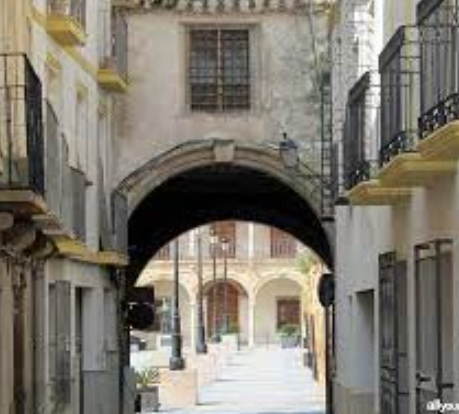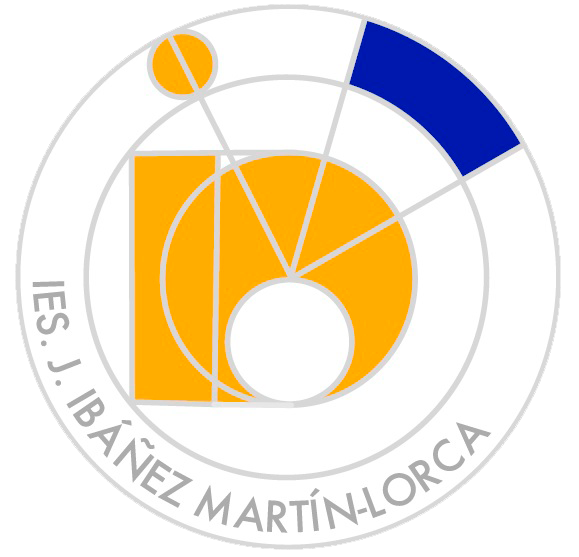PUENTE DEL BARRIO Y CALLE CAVA
PUENTE DEL BARRIO
Fecha: Fue creado en 1875.
Localización: Barrio de San Cristobal, Lorca (Murcia).
Autores: El ingeniero fue el lorquino Juan Moreno Rocafull, y el constructor fue Antonio Martínez.
Precio: Su presupuesto fue de 3.047.571 reales de vellón (Los reales de vellón o dobles de la edad media son aleaciones de cobre y plata con la que antiguamente se fabricaban algunas monedas).
Descripción: Es un puente con tres arcos hecho de piedra, por debajo de él pasa el río Guadalentín, tiene una largura de alrededor de 80 metros .

Datos de interés
Ha sido testigo de las numerosas riadas que sacuden cada cierto tiempo esta zona del Levante español:
El 15 de octubre de 1879, cuando se produjo la riada de Santa Teresa, en la cabecera del Guadalentín se estima que cayeron 600 ml en una hora. Ocasionó 13 muertos.
El mes de septiembre de 1891, la conocida como riada de San Jacinto fue superior a la riada anterior, pero gracias a la presa de Puentes, Lorca y la comarca se salvó de una nueva catástrofe.
El mes de octubre de 1948, el caudal estimado bajo el puente fue superior a los 800 m³/s.
El mes de junio de 1900 se produce la riada de San Aniceto siendo superior a la de Santa Teresa y que inundó el barrio de San Cristóbal de Lorca.
Barrio bridge:
Date: it was created in 1875.
Location: Barrio in San Cristobal, Lorca (Murcia).
Authors: the engineer was Juan Moreno Rocafull,and the constructor was Antonio Martínez.
Price: the budget was of 3.047.571 “reales de vellón” (The “reales de vellón” are copper and silver alloy with which formerly were manufactured some coins).
Description: Is a bridge with three stone bows,the Guadalentín river flows underneath it,and it measures 80 metres.
Interesting facts
It has been witness to the numerous floods that have shaken this part of the Spanish Levante region from time to time:
The 15 of october of 1879, when the Santa Teresa flood occurred, in the headwaters of the Guadalentín it is estimated that 600 mm fell in one hour.It resulted in 13 deaths.
The month of september of 1891, The flood known as the San Jacinto flood was greater than the previous flood, but thanks to the Puentes dam, Lorca and the region were saved from a new catastrophe.
The month of october of 1948, the estimated flow under the bridge was more than 800 m³/s.
The month of june of 1900 The flood of San Aniceto was greater than that of Santa Teresa and flooded the Barrio of San Cristóbal of Lorca.
CALLE CAVA
Fecha: Siglo XIX.
Localización: C. Abogado Agustín Aragón, 6, 30800 Lorca, Murcia. Situada en un barrio medieval de la ciudad, específicamente en el casco antiguo.
Descripción: En los aledaños de esta ubicación, normalmente nos encontraremos con tiendas y comercios interesantes. Debido a su ubicación, pensamos que se pueden encontrar rutas apropiadas para los turistas.
Datos de interés: En está calle se ha realizado una excavación entre los años 2020-2022, en la que se han encontrado un antiguo cementerio islámico de la época emiral y califal. Entre 1990-1991 también se realizó otra excavación en la que se encontró otro cementerio pero esta vez un cementerio almohade; se localizó un morabito o qubba del s. XII. Fue un cementerio militar en el siglo XIII.
El viejo caserón abandonado de la calle sirvió de escenario para que unos actores interpretarán los días 25 y 26 de octubre el espectáculo de terror «Los crímenes de la calle Cava», una historia de ficción y trágica muerte y terror. Cuenta con la Compañía Teatro Guerra y el Ballet Nuria Periago.Los espectadores llegaron a cada pase en un coche fúnebre tirado por caballos al estilo del siglo XIX.

Cava street:
Date: XIX century.
Location: C. Abogado Agustín Aragón, 6, 30800 Lorca, Murcia.Situated ina mediaeval district in the city, specifically in the old town.
Description: In the vicinity of this location, normally we will find interesting shops and businesses. Due to its location, we believe that appropriate routes can be found for tourists.
Interesting facts: In this street An excavation was carried out between 2020-2022, in which an ancient Islamic cemetery from the Emirate and Caliphate periods was found. Between 1990-1991 another excavation was also carried out in which another cemetery was found, but this time an Almohad cemetery; a 12th-century marabout or qubba was located. It was a military cemetery in the 13th century. On 25 and 26 October, the old abandoned house on the street was used as a stage for actors to perform the horror show «Los crímenes de la calle Cava», a story of fiction and tragic death and terror, with Compañía Teatro Guerra and Ballet Nuria Periago. The show features the Teatro Guerra Company and the Nuria Periago Ballet, and spectators arrived at each performance in a 19th century-style horse-drawn hearse.
